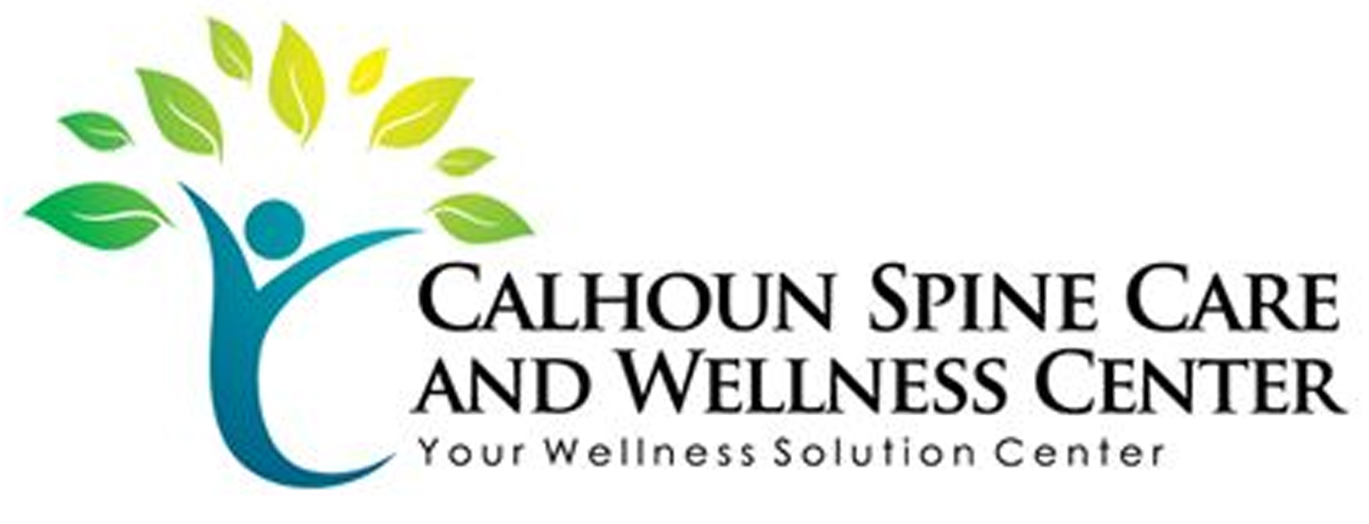If you're dealing with sciatica pain in Calhoun, you might be wondering about the most effective techniques for relief. From physical therapy that includes targeted stretches to alternative therapies like acupuncture, there are several options available to help you manage discomfort. You'll also find that lifestyle changes and heat therapy can play a significant role in your recovery. But what's the best approach for your specific situation? Understanding the nuances of these methods could be the key to finding lasting relief.
Understanding Sciatica Pain
Understanding sciatica pain starts with recognizing its root causes and symptoms. Sciatica isn't just a single condition; it's a term that describes pain radiating along the sciatic nerve, typically affecting one side of your body. This nerve runs from your lower back down through your hips and buttocks, extending into each leg. When this nerve gets compressed or irritated, you experience discomfort.
Several factors can lead to sciatica. Herniated discs are one of the most common culprits. When a disc in your spine slips out of place, it can press against the sciatic nerve, causing pain.
Other potential causes include spinal stenosis, which narrows the spinal canal, or spondylolisthesis, a condition where one vertebra slips forward over another. Additionally, muscle spasms or inflammation in the lower back can contribute to nerve compression.
Lifestyle choices also play a significant role. If you're sedentary or overweight, these factors can increase your risk of developing sciatica. Poor posture while sitting or standing can further strain your back, leading to pain.
You mightn't realize it, but simple activities like lifting heavy objects improperly can also trigger sciatica.
Common Symptoms of Sciatica
When you experience sciatica, you might notice distinct nerve pain characteristics, often described as sharp, burning, or tingling sensations.
These symptoms can radiate from your lower back down through your legs, making everyday activities challenging.
Alongside this nerve pain, you may also encounter associated physical symptoms, such as muscle weakness or numbness.
Nerve Pain Characteristics
Experiencing sciatica can be intimidating, as the nerve pain it causes often manifests in distinct and uncomfortable ways. You might feel a sharp, shooting pain that travels from your lower back down through your buttocks and into your legs. This pain can vary in intensity, sometimes feeling like a jolt or an electric shock. You may also notice a burning sensation along the nerve pathway.
In addition to sharp pain, you might experience tingling or numbness in your legs or feet. This numbness can make it difficult to move your legs fully, impacting your balance and coordination. You might find that one side of your body feels more affected than the other, which can be frustrating.
Another common characteristic is the discomfort that worsens with prolonged sitting or standing. You may feel a sense of heaviness or weakness in your leg, making everyday activities challenging.
Understanding these nerve pain characteristics can help you communicate better with your healthcare provider, leading to more effective treatment options and relief strategies tailored to your specific symptoms.
Associated Physical Symptoms
What symptoms should you watch for if you suspect sciatica? You might experience a sharp, shooting pain that travels from your lower back down through your buttock and into your leg. This pain can intensify when you sit, stand, or move suddenly.
You may also feel a tingling or burning sensation, often described as pins and needles, in your leg or foot.
In addition to pain, you might notice weakness in the affected leg, making it difficult to walk or perform daily activities. Some people report numbness, which can be alarming, as it may affect your ability to sense touch or temperature in your leg.
Another symptom to keep an eye on is changes in your posture or gait. You might find yourself limping or leaning to one side to avoid discomfort.
If you have any of these symptoms, it's crucial to consult with a healthcare professional. Ignoring them could lead to more significant issues down the line.
Addressing sciatica early can help you regain mobility and improve your quality of life.
Physical Therapy Techniques
When it comes to sciatica pain relief, physical therapy techniques can make a significant difference.
You'll find that stretching exercises improve flexibility, while strengthening your core muscles enhances stability.
Additionally, manual therapy techniques can help alleviate tension and promote healing in affected areas.
Stretching Exercises Benefits
Stretching exercises offer significant benefits for those suffering from sciatica pain, helping to alleviate discomfort and improve mobility. By incorporating regular stretching into your routine, you can target tight muscles and enhance flexibility, which is vital for managing sciatic nerve pain.
Here are some key advantages of stretching exercises:
- Increased Flexibility: Stretching helps lengthen tight muscles, allowing for greater range of motion in your hips and lower back.
- Reduced Muscle Tension: Regular stretching can relieve tension in the muscles surrounding the sciatic nerve, reducing pressure and discomfort.
- Improved Posture: Stretching encourages proper alignment, which can prevent additional strain on your back and help with pain management.
- Enhanced Circulation: Stretching boosts blood flow to your muscles, promoting healing and reducing inflammation in affected areas.
You don't have to do intense yoga poses to reap the benefits—simple stretches can make a big difference.
Try to incorporate gentle stretching into your daily routine, focusing on areas that feel tight. This commitment can lead to substantial improvements in your overall comfort and mobility.
Strengthening Core Muscles
Strengthening your core muscles is essential for managing sciatica pain effectively. A strong core stabilizes your pelvis and spine, reducing strain on the sciatic nerve. When your core is weak, it can lead to poor posture and increased tension in your lower back, exacerbating your pain.
Incorporate exercises like planks, bridges, and pelvic tilts into your routine. These movements engage your abdominal, back, and pelvic muscles, promoting balance and stability. Start with gentle exercises and gradually increase the intensity. Aim for consistency; even a few minutes daily can make a difference.
You might also try incorporating stability balls or resistance bands to enhance your workouts. These tools can challenge your muscles and improve your overall strength. Remember to listen to your body; if an exercise causes pain, stop and reassess.
Consult a physical therapist for personalized guidance and to guarantee you're performing exercises correctly. They can help you create a tailored program that targets your specific needs.
Manual Therapy Techniques
Manual therapy techniques can considerably ease sciatica pain and improve mobility. These hands-on treatments are designed to manipulate muscles and joints, helping to relieve tension and restore proper function.
When you work with a skilled therapist, you'll likely experience a variety of approaches tailored to your needs. Here are some common manual therapy techniques you might encounter:
- Massage Therapy: This technique relaxes tight muscles and improves blood flow, promoting healing.
- Joint Mobilization: Gentle movements help restore range of motion in the affected areas.
- Myofascial Release: This technique targets the fascia, the connective tissue surrounding muscles, reducing pain and stiffness.
- Stretching: Customized stretches can help release tension in your back and legs, alleviating pressure on the sciatic nerve.
These techniques not only reduce pain but also enhance your overall quality of life.
It's crucial to communicate openly with your therapist about your symptoms and progress so they can adjust the treatment plan accordingly.
Don't hesitate to explore these options, as they can be a critical part of your journey to recovery from sciatica.
Stretching Exercises for Relief
When dealing with sciatica pain, incorporating specific stretching exercises can greatly enhance your comfort and mobility. These stretches target the muscles that may be contributing to your discomfort, helping to alleviate tension and improve flexibility.
Start with the piriformis stretch. Sit on the floor with your legs extended. Cross the affected leg over the other, placing your foot flat on the ground. Gently pull your knee toward your opposite shoulder. Hold this position for 20 to 30 seconds, then switch sides. This stretch can help relieve pressure on the sciatic nerve.
Next, try the seated hamstring stretch. Sit on the floor with one leg extended and the other bent. Reach toward your toes on the extended leg, keeping your back straight. Hold for 20 to 30 seconds, then switch legs. This stretch helps loosen tight hamstrings, which can alleviate sciatica symptoms.
The child's pose is another effective stretch. Kneel on the floor and sit back on your heels. Reach your arms forward on the ground, relaxing your forehead on the mat. Hold for 30 seconds while breathing deeply. This position provides gentle stretching for your lower back and hips.
Lastly, consider the cat-cow stretch. Start on all fours and alternate between arching your back up (cat) and lowering it while lifting your head (cow). This movement can enhance spinal flexibility and relieve tension.
Chiropractic Care Options
Chiropractic care offers a range of effective options for managing sciatica pain. When you visit a chiropractor, they'll assess your condition and create a tailored treatment plan to help alleviate your discomfort.
By focusing on spinal alignment and overall body mechanics, chiropractic care addresses the root causes of sciatica rather than just masking the symptoms.
Here are some common techniques you might encounter in chiropractic care:
- Spinal Adjustments: Chiropractors use precise manual adjustments to realign the spine, alleviating pressure on the sciatic nerve.
- Therapeutic Exercises: Your chiropractor may recommend specific exercises to strengthen your core and improve flexibility, which can reduce the likelihood of future flare-ups.
- Hot and Cold Therapy: Applying heat or ice can help reduce inflammation and improve blood flow, promoting healing in the affected areas.
- Massage Therapy: Your chiropractor might incorporate massage techniques to relieve muscle tension, improve circulation, and enhance overall comfort.
These chiropractic options can greatly reduce your sciatica pain and improve your mobility.
Regular visits can help monitor your progress and make necessary adjustments to your treatment plan.
By incorporating these methods, you'll not only find relief but also gain a better understanding of how to maintain your spinal health.
Medication and Pain Management
Finding relief from sciatica pain often involves a careful approach to medication and pain management strategies. You'll want to discuss your symptoms with a healthcare professional to determine the best course of action. Over-the-counter nonsteroidal anti-inflammatory drugs (NSAIDs) like ibuprofen or naproxen can help reduce inflammation and alleviate pain. If these aren't effective, your doctor might prescribe stronger medications, including muscle relaxants or even opioids for more intense discomfort.
In addition to medication, you should consider a thorough pain management plan. This might include physical therapy, which can strengthen the muscles around your spine, improve mobility, and teach you proper body mechanics to avoid aggravating your sciatica. Combining medication with physical therapy often leads to better outcomes.
Don't overlook the importance of self-care. Applying heat or cold packs to the affected area can provide immediate relief and complement your medication regimen. You might also find that certain lifestyle changes, such as incorporating regular low-impact exercises or maintaining a healthy weight, can help reduce sciatica flare-ups.
Lastly, keep a close eye on your pain levels and adjust your medication as necessary, always under your doctor's guidance. By actively engaging in your pain management plan and communicating with your healthcare provider, you can effectively manage your sciatica pain and improve your overall quality of life.
Alternative Therapies
How can alternative therapies complement your sciatica pain relief plan? Integrating alternative therapies into your routine can provide significant relief from sciatica pain. These approaches focus on holistic healing, addressing not just the symptoms but also the underlying causes.
Here are some effective alternative therapies you might consider:
- Acupuncture: This ancient practice involves inserting thin needles into specific points on your body. Many find it effective in reducing pain and improving mobility.
- Chiropractic Care: A chiropractor can realign your spine and improve nerve function, potentially alleviating sciatica pain through manual therapies and adjustments.
- Massage Therapy: Therapeutic massage can help reduce muscle tension and improve circulation. It's a great way to relieve stress and promote overall well-being, which may help ease your discomfort.
- Yoga and Stretching: Gentle yoga poses and stretching exercises can enhance flexibility and strengthen your core, providing support for your back and reducing pressure on the sciatic nerve.
Incorporating these therapies into your pain relief strategy could lead to a more balanced approach, allowing for greater flexibility in managing your condition.
Remember, it's crucial to consult with your healthcare provider before starting any new therapy to verify it's safe and suitable for your specific situation.
Lifestyle Modifications
Making lifestyle modifications can greatly impact your sciatica pain management.
By incorporating a regular exercise routine, setting up an ergonomic workspace, and managing your weight, you can create a healthier environment for your body.
Let's explore these strategies to help you find relief.
Regular Exercise Routine
Incorporating a regular exercise routine into your daily life can greatly alleviate sciatica pain and enhance overall well-being. Engaging in physical activity helps strengthen the muscles that support your spine, increases flexibility, and improves circulation, which can all contribute to pain relief.
Here are some effective exercises you might consider:
- Stretching: Focus on gentle stretches for your lower back and hamstrings to relieve tension.
- Walking: A simple daily walk can boost blood flow and keep your muscles engaged without straining them.
- Swimming: The buoyancy of water reduces pressure on your joints, making swimming an excellent low-impact workout.
- Yoga: Specific yoga poses can improve flexibility and strengthen your core, which supports your back.
Ergonomic Workspace Setup
Creating an ergonomic workspace can greatly reduce sciatica pain and improve your productivity. Start by ensuring your chair supports your lower back.
Choose a chair that allows you to sit with your feet flat on the floor and knees at or below hip level. If your chair lacks lumbar support, consider adding a cushion.
Next, position your desk at the right height. Your elbows should be at a 90-degree angle when typing, keeping your wrists straight.
If you're using a laptop, elevate the screen to eye level to prevent straining your neck.
Don't forget about your keyboard and mouse; they should be close enough so you can use them comfortably without reaching.
Regular breaks are essential—stand up, stretch, or walk around every 30-60 minutes to keep your blood flowing.
Finally, consider using a footrest if your feet don't reach the floor. This can help relieve pressure on your lower back.
Implementing these adjustments not only fosters a healthier posture but can also greatly alleviate discomfort associated with sciatica.
Prioritize your workspace setup to enhance both your comfort and efficiency.
Weight Management Strategies
Struggling with excess weight can exacerbate sciatica pain, making effective weight management essential for relief. By adopting healthier lifestyle choices, you can reduce your body weight and alleviate stress on your spine and sciatic nerve.
Here are some strategies to help you manage your weight effectively:
- Eat a balanced diet: Focus on whole foods, including fruits, vegetables, lean proteins, and whole grains. Limit processed foods and sugary snacks.
- Stay active: Incorporate regular physical activity into your routine. Aim for at least 150 minutes of moderate exercise weekly, such as walking, swimming, or cycling.
- Set realistic goals: Aim for gradual weight loss of 1-2 pounds per week. This sustainable approach is more effective than drastic diets.
- Monitor your progress: Keep track of your food intake and exercise. Use apps or journals to maintain accountability and stay motivated.
Heat and Cold Therapy
Heat and cold therapy are effective tools for managing sciatica pain, offering relief by targeting inflammation and muscle tension. You can easily incorporate these methods into your daily routine to alleviate discomfort.
When using heat therapy, apply a warm compress or heating pad to the affected area for about 15-20 minutes. This helps relax tight muscles and improve blood circulation, promoting healing. You might also consider taking a warm bath to enhance the relaxation effect.
Just be cautious not to overheat the area, as this can lead to burns.
On the other hand, cold therapy can be equally beneficial, especially during flare-ups. Ice packs can effectively reduce inflammation and numb the painful region. Wrap ice in a cloth or use a gel pack, and apply it to the affected area for 15-20 minutes.
Remember to give your skin a break between applications to prevent frostbite.
You may find it helpful to alternate between heat and cold therapy. Start with cold therapy to reduce swelling, then switch to heat to promote relaxation. This combination can enhance your overall relief and improve your mobility.
Always listen to your body. If you feel increased pain or discomfort, stop the treatment.
Consistent application of heat and cold therapy can make a significant difference in managing your sciatica pain, helping you regain comfort and improve your quality of life.
When to Seek Professional Help
Recognizing when to seek professional help for sciatica pain is essential for effective management and recovery. While many cases of sciatica can be alleviated with home treatments, there are specific signs that indicate it's time to consult a healthcare provider. Ignoring these signs can lead to prolonged discomfort or worsening of your condition.
Here are some indicators that you shouldn't overlook:
- Severe Pain: If your pain is debilitating and prevents you from performing daily activities.
- Numbness or Weakness: Experiencing significant numbness, weakness, or difficulty controlling your leg or foot.
- Bowel or Bladder Issues: If you notice changes in bowel or bladder control, this could signal a serious condition.
- Persistent Symptoms: If your symptoms don't improve after a few weeks of self-care or worsen over time.
When you seek help, your healthcare provider may recommend imaging tests like X-rays or MRIs to diagnose the underlying issue.
They can also discuss treatment options tailored to your needs, which might include physical therapy, medications, or even surgical interventions.
Don't hesitate to reach out for professional assistance. Early intervention can make a significant difference in your recovery journey and help you regain your quality of life.
If you're unsure, it's always better to err on the side of caution and consult a professional. Your health is worth it!
Conclusion
In Calhoun, finding relief from sciatica pain is within your reach. By incorporating physical therapy, stretching exercises, and alternative therapies like acupuncture, you can effectively manage your symptoms. Don't underestimate the power of heat and cold therapy, along with lifestyle changes, to enhance your recovery. Remember, if your pain persists or worsens, seeking professional help is essential. Take charge of your health and explore these techniques to reclaim your comfort and mobility.



